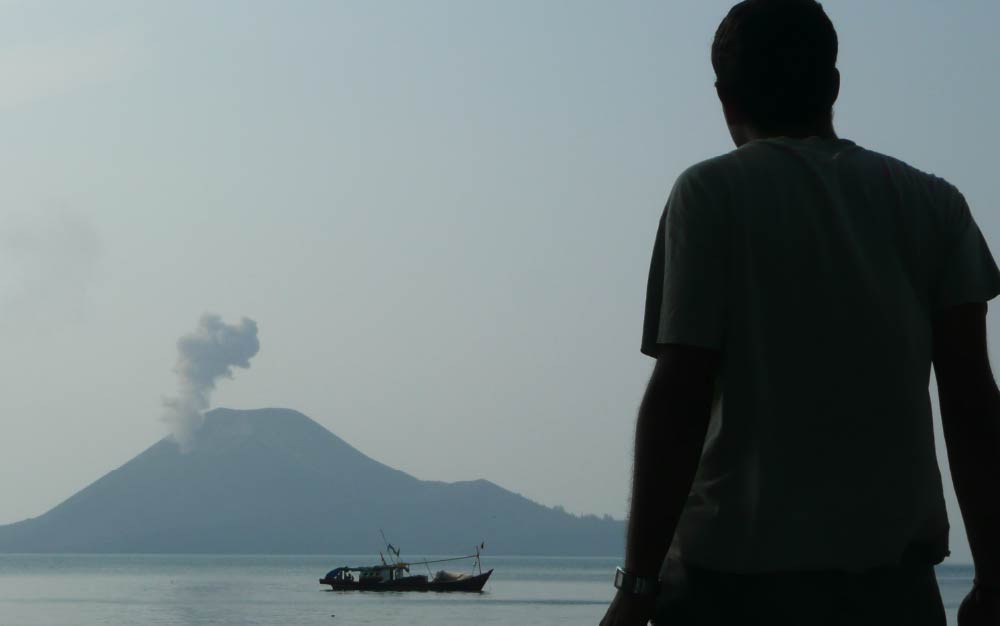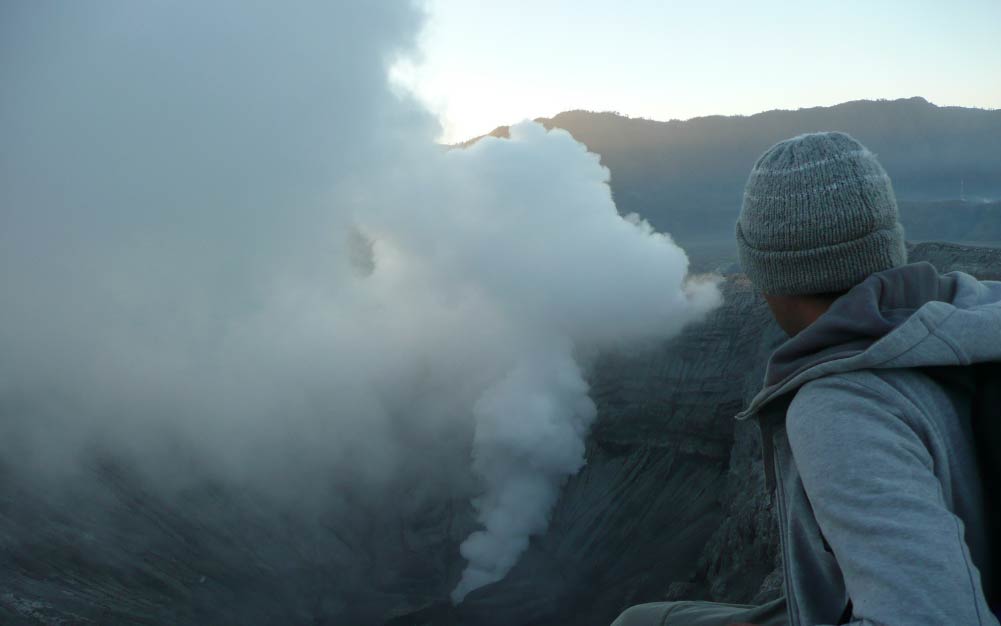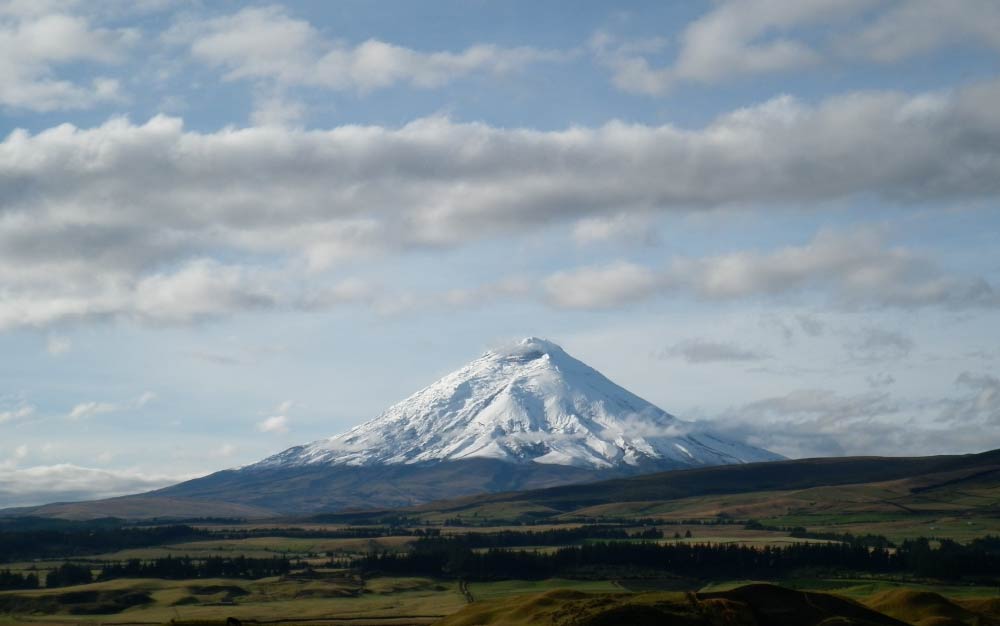WHY DO SOME PRODUCERS
GROW COFFEE NEAR ACTIVE VOLCANOES?
Across the world, volcanic soil is commonly viewed as being “more fertile” for growing crops, including coffee. But why is this?
Around the world, more than 800 million people – almost 10% of the world’s population – live within 100 kilometres of the world’s 1,431 active volcanoes. While they have immense destructive power, active volcanoes also attract millions of tourists every year, and provide geothermal energy that can be harnessed to support local communities. Furthermore, volcanic material produced during eruptions can mix with the surrounding land to produce some of the world’s most fertile crop-growing soils.
Coffee plants, in particular, thrive in volcanic soil, which is characterised by a set of physical, chemical, and mineral properties that make it agriculturally superior to other soil types. However, the soil is only one part of the story; volcanic environments also provide other conditions for growing some of the world’s tastiest coffee.
ANDISOLS: THE POWER OF VOLCANIC SOIL
The majority of volcanic soils are formed by “tephra”. Tephra is a mixture of volcanic particles (ash) and rocky fragments that are ejected from a volcano during an eruption, and then fall to the ground. Over time, tephra breaks down to produce what we call volcanic soil.
Most volcanic soils are known as Andisols or Andosols, which comes from the Japanese words anshokudo and ando, meaning “dark coloured soil”. Andisols are light and fluffy; they contain high proportions of silicate glass and have a tendency to accumulate organic matter.

Andisols are excellent for plant-rooting for a number of reasons. Firstly, they have low density and a stable, but porous structure. This allows the soil to retain water effectively, and makes it relatively resistant to drought. Because they are highly permeable, plant roots can also grow deep and drain easily, which stops the roots from getting too wet and rotting.
Coffee plants require a variety of nutrients to grow, which are delivered through the soil. In part, volcanic soils are fertile because they are relatively “young”; they retain many of the nutrients that were present in the original rock. Although it does vary from volcano to volcano, Andisols commonly contain phosphorus, potassium, calcium, magnesium, zinc, iron and boron, all of which are important for coffee plant development.
For example, potassium levels affect coffee cherry and bean formation, but also sugar levels and citric acid content, which change the flavour of the coffee. Calcium is important for root and leaf development and affects how quickly the fruit ripens, while boron improves crop yield. Studies have also shown that plants grown in phosphorus and potassium-rich soil generally produce coffees with better aroma, flavour, and acidity.
ERUPTION STYLE AND ANDISOLS
The fertility of volcanic soil and the growth of the coffee planted in it depend on the chemistry, nature, and frequency of volcanic eruptions.
Eruptions can be divided into two types: effusive eruptions and explosive eruptions. Effusive eruptions are primarily characterised by outpourings of lava, which produces Andisols that are rich in iron and magnesium. Explosive eruptions, on the other hand, are characterised by the ejection of silica-rich volcanic ash and debris (or tephra). This then blankets the land around the volcano, and produces Andisols that are high in aluminium, sodium, and potassium.

The majority of volcanic soils found around the world form after explosive eruptions. Andisols are less commonly formed after effusive eruptions, as the surfaces formed by lava flows can take thousands of years to break down into soil.
Many coffee-producing Latin American countries – including Colombia, Ecuador, and Guatemala – sit around something called the “Pacific Ring of Fire”, which contains more than 75% of the world’s active and dormant volcanoes. These countries contain many explosively erupting volcanoes which produce Andisols.
Because most of these volcanoes erupt after intervals of tens to hundreds of years, fresh tephra intermittently falls onto the surrounding soil. This protects the underlying Andisols from physical erosion and weathering, which preserves them.
It also means that fresh tephra is regularly added, providing a constant supply of nutrients to “top up” the soil and maintain fertility levels.
VOLCANIC COFFEE: BEYOND THE SOIL
Aside from the nutrient-rich soils that volcanoes create, the terrain of many volcanic regions offers other benefits for growing coffee. The arabica plant thrives at altitudes of 1,000 to 2,000 m.a.s.l. and between temperatures of 18 and 21°C.
Volcanoes are typically found along mountain belts at a high altitude, such as the volcanic arcs of Central and South America. Coffee quality generally increases at higher elevation, where temperatures are cooler, bean growth is slower, and cherries ripen more slowly.
Coffee plants also grow best on angles of about 9°, which falls within the range found on the lower slopes of most explosively erupting volcanoes (6 to 10°). Mountainous volcanic terrains also generally provide enough shade to protect coffee plants from the harsh heat of the sun, which can stunt plant growth.

Although Andisols are found globally around both active and dormant volcanoes, the climate controls on coffee plant growth mean that cultivation primarily occurs in the inter-tropical zone around the equator, known as the “bean belt”.
This zone extends across Central and South America and the Caribbean, as well as parts of Africa, the Middle East, and Asia. Many major coffee-producing countries (such as Colombia, Costa Rica, Ethiopia, Guatemala, and Indonesia) are found within this zone, and have strong links to volcanic activity.
A VOLCANIC CHALLENGE: GROWING COFFEE IN HIGH-RISK AREAS
Most Andisols used for farming are found close to explosively erupting volcanoes. The nature of these eruptions makes them inherently dangerous. As well as ash clouds, explosive eruptions can also produce hot currents of gas and ash called pyroclastic flows, and volcanic mudflows called lahars.
Both pyroclastic flows and lahars can reach speeds of more than 80 kilometres an hour, and can travel tens or even hundreds of kilometres. When a volcano erupts, they will sweep down the side in minutes and destroy almost anything in their path.
Both hazards bring volcanic material to the surrounding area that will, in time, produce and maintain Andisols. However, in the short term, they can devastate farmland and wipe out entire towns.
Andisols encourage population growth around active volcanoes and previously unsettled volcanic regions. But when more people settle or grow crops near a volcano, the risk to life and livelihood increases. This challenge will always exist.

Over centuries, both experience and research have highlighted the conditions which affect how coffee plants grow. How each individual factor influences coffee flavour, however, is far more complex. Minute variations in local soil properties and environmental factors (terroir) can result in a coffee with characteristics that are very different even from those of nearby farms. While our understanding is growing, more research is still required to appreciate just how volcanic material affects coffee flavour.
So, next time you sip a delicious cup of coffee from a well-known volcanic region, think about the natural forces that helped to produce its unique flavour. And think about the coffee farmers who work in these hazardous volcanic regions every single day to provide your morning brew with its distinct taste.
.
Source: Perfect Daily Grind
Link: https://perfectdailygrind.com/2020/08/why-do-some-producers-grow-coffee-near-active-volcanoes-volcanic-coffee-tephra-eruptions/







